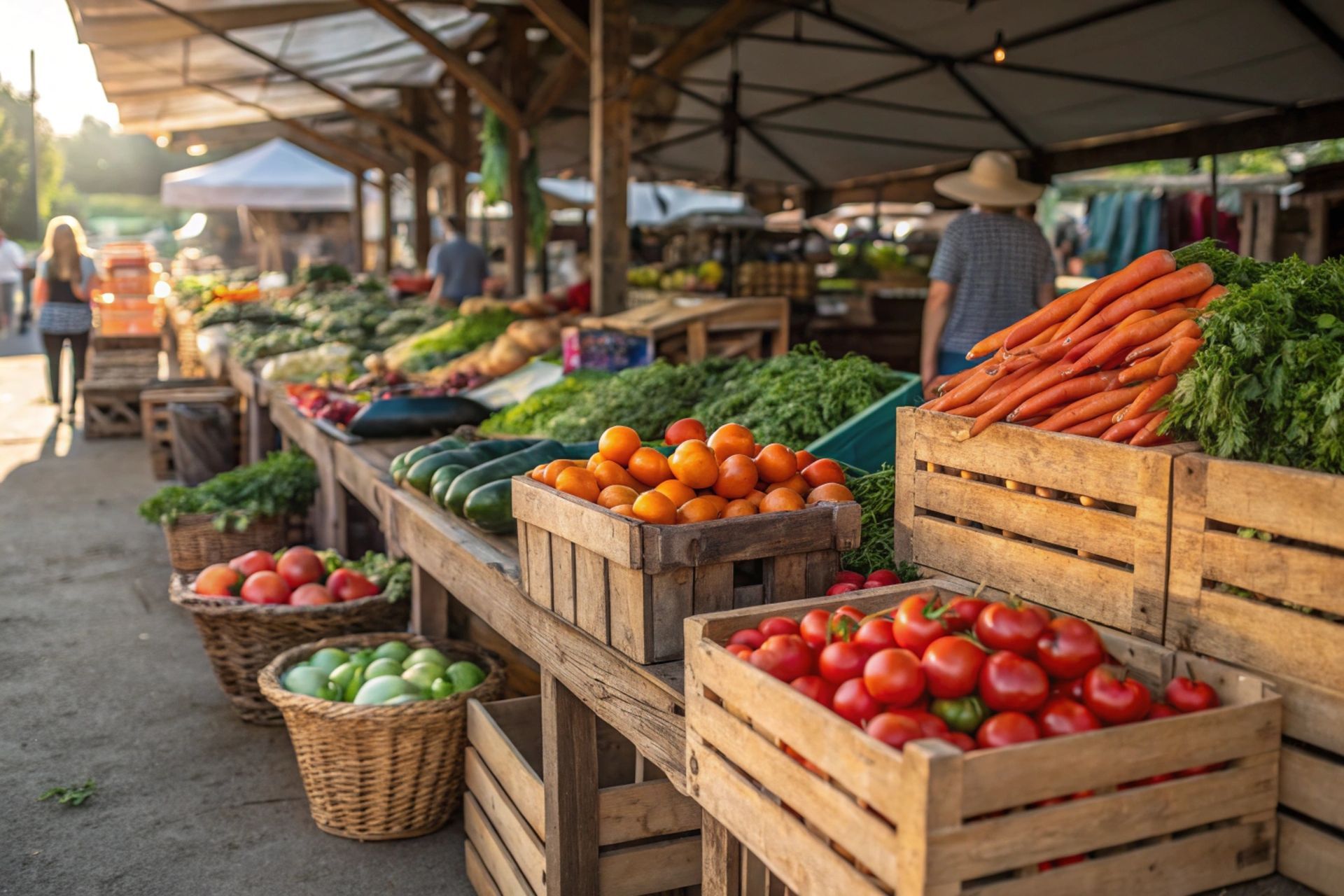Keep An Eye on Your Plants!
August 16, 2024
It's Been a Hot Summer and Your Plants May Be Struggling

Las Vegas is no stranger to intense heat waves, and while desert plants are adapted to these conditions, even the hardiest xeriscape plants can suffer in extreme temperatures. For those with traditional green lawns or xeriscape gardens, understanding the signs of plant dehydration is crucial for maintaining a healthy landscape. Here's how you can identify thirsty plants in your garden and what to do about it.
Color changes are another indicator to watch for. Xeriscape plants that usually boast vibrant green or gray-green hues may start to turn yellow or brown when they’re struggling to stay hydrated. One critical sign is delayed recovery. Normally, xeriscape plants should bounce back from wilting or curling overnight when the temperatures drop. If they don’t, it’s a clear signal that they need water.
A more severe sign of dehydration is crispy leaves, where the edges turn brown and feel dry to the touch. In lawns, this may manifest as brown patches that are brittle underfoot. Leaf drop is another symptom, particularly in trees and shrubs not native to desert environments. These plants may start shedding leaves to reduce water loss. Dehydrated plants might also exhibit stunted growth, with smaller or non-existent new growth, wilting flowers, and affected fruit production.
Mulching is another effective strategy. Applying a layer of mulch around the base of your plants helps retain moisture in the soil, reducing water loss through evaporation. For especially vulnerable plants, consider using shade cloths or garden umbrellas to provide temporary shade during the peak heat of the day.
If you have a lawn, adjust your watering habits by reducing the frequency but increasing the depth of watering sessions. Frequent, shallow watering can lead to shallow root systems that are more susceptible to drought. To ensure your plants are getting enough water, check the soil moisture regularly. You can use a soil moisture meter or simply stick your finger into the soil about 2-3 inches deep. If the soil is dry at that depth, it’s time to water.
Regular maintenance of your irrigation system is also crucial. Check for leaks or clogged emitters and adjust your watering schedule as needed during extreme weather conditions. By being proactive, you can help ensure your plants stay healthy and hydrated, even when the temperatures soar. It is always cheaper to maintain plants that are already installed than to have those plants replaced when they die from lack of water.
In Las Vegas, where heat waves are a part of life, it’s essential to monitor the health of your plants closely. By understanding the signs of dehydration and taking steps to ensure your plants receive adequate water, you can keep your landscape thriving even in the harshest conditions. Whether you’re maintaining xeriscape plants or traditional green foliage, a little extra care during extreme heat can make all the difference in preserving your garden’s beauty.
Understanding the Impact of Heat Waves on Your Plants
During a heat wave in Las Vegas, temperatures can soar well above 110°F, causing plants to lose water rapidly through a process called transpiration. In Las Vegas, where rainfall is scarce, the combination of high heat and low humidity can quickly dehydrate plants, even those adapted to desert conditions. Recognizing the signs of dehydration early on is key to keeping your garden thriving.Signs of Dehydration in Xeriscape Plants
Xeriscape plants are known for their drought tolerance, but that doesn’t make them invincible. Even these resilient plants can show signs of stress during prolonged heat waves. Wilting is often the first visible sign, with leaves or spikes appearing droopy or limp. Additionally, some xeriscape plants may curl their leaves or pads inward as a defense mechanism to conserve moisture.Color changes are another indicator to watch for. Xeriscape plants that usually boast vibrant green or gray-green hues may start to turn yellow or brown when they’re struggling to stay hydrated. One critical sign is delayed recovery. Normally, xeriscape plants should bounce back from wilting or curling overnight when the temperatures drop. If they don’t, it’s a clear signal that they need water.
Signs of Dehydration in Typical Green Foliage
Traditional green foliage, including lawns, shrubs, and non-native plants, tends to be more susceptible to the harsh Las Vegas climate. These plants usually require more water, making them more vulnerable during extreme heat. Wilting is a common symptom, where leaves hang limply from stems, and the overall posture of the plant appears droopy.A more severe sign of dehydration is crispy leaves, where the edges turn brown and feel dry to the touch. In lawns, this may manifest as brown patches that are brittle underfoot. Leaf drop is another symptom, particularly in trees and shrubs not native to desert environments. These plants may start shedding leaves to reduce water loss. Dehydrated plants might also exhibit stunted growth, with smaller or non-existent new growth, wilting flowers, and affected fruit production.
How to Respond to Dehydration
If you notice any of these signs in your plants, it’s important to act quickly. Start by watering your plants deeply in the early morning or late evening, when temperatures are cooler. This allows the water to reach the roots before evaporating. Xeriscape plants, in particular, benefit from less frequent but deeper watering.Mulching is another effective strategy. Applying a layer of mulch around the base of your plants helps retain moisture in the soil, reducing water loss through evaporation. For especially vulnerable plants, consider using shade cloths or garden umbrellas to provide temporary shade during the peak heat of the day.
If you have a lawn, adjust your watering habits by reducing the frequency but increasing the depth of watering sessions. Frequent, shallow watering can lead to shallow root systems that are more susceptible to drought. To ensure your plants are getting enough water, check the soil moisture regularly. You can use a soil moisture meter or simply stick your finger into the soil about 2-3 inches deep. If the soil is dry at that depth, it’s time to water.
Preventing Dehydration in the Future
To minimize the risk of dehydration during future heat waves, consider installing a drip irrigation system. Drip irrigation delivers water directly to the roots of your plants, minimizing water loss and ensuring they receive the moisture they need. When adding new plants to your garden, opt for drought-resistant species that are better suited to the Las Vegas climate.Regular maintenance of your irrigation system is also crucial. Check for leaks or clogged emitters and adjust your watering schedule as needed during extreme weather conditions. By being proactive, you can help ensure your plants stay healthy and hydrated, even when the temperatures soar. It is always cheaper to maintain plants that are already installed than to have those plants replaced when they die from lack of water.
In Las Vegas, where heat waves are a part of life, it’s essential to monitor the health of your plants closely. By understanding the signs of dehydration and taking steps to ensure your plants receive adequate water, you can keep your landscape thriving even in the harshest conditions. Whether you’re maintaining xeriscape plants or traditional green foliage, a little extra care during extreme heat can make all the difference in preserving your garden’s beauty.

Every Thanksgiving morning, millions of people gather along the streets of Manhattan—or tune in from cozy living rooms across the country—to watch larger-than-life balloons, dazzling floats, marching bands, and performances fill the streets. The Macy’s Thanksgiving Day Parade has become an iconic piece of American holiday tradition, but its roots stretch back nearly a century. Here’s how this beloved celebration came to be—and how it grew into the cultural phenomenon we know today. Humble Beginnings: The 1920s The first Macy’s parade took place in 1924, making it one of the oldest Thanksgiving parades in the U.S. Macy’s employees—many of them immigrants—wanted to celebrate their new American traditions with a grand festival inspired by the street fairs and carnivals of their home countries. The debut parade featured: Live animals borrowed from the Central Park Zoo Floats pulled by horses Marching bands Santa Claus as the finale Even in its first year, the parade drew huge crowds. Macy’s quickly declared it an annual event. Humble Beginnings: The 1920s The first Macy’s parade took place in 1924 , making it one of the oldest Thanksgiving parades in the U.S. Macy’s employees—many of them immigrants—wanted to celebrate their new American traditions with a grand festival inspired by the street fairs and carnivals of their home countries. The debut parade featured: Live animals borrowed from the Central Park Zoo Floats pulled by horses Marching bands Santa Claus as the finale Even in its first year, the parade drew huge crowds. Macy’s quickly declared it an annual event. Growth Through the Mid-Century By the 1930s and ’40s, the parade had become a cherished national event. Important milestones include: 1932 – The parade was first broadcast on radio. 1942–1944 – The parade paused during WWII, when balloons were donated to help with the rubber shortage. 1945 – The parade returned bigger than ever. 1948 – NBC aired the first televised broadcast, bringing the spectacle into homes nationwide. Throughout the 1950s and ’60s, the parade expanded with more elaborate floats, celebrity appearances, and increasingly sophisticated balloon designs. Pop Culture Takes Over By the 1970s and 1980s, the parade had fully embraced modern entertainment. This era brought: Balloons of beloved characters like Snoopy, Kermit the Frog, and Superman Broadway performances becoming a staple Larger production budgets and national media coverage The parade evolved into both a celebration and a marketing phenomenon—yet still retained its charm and festive spirit. A 21st-Century Icon Today’s parade is a blend of high-tech engineering, pop culture, and decades-old tradition. Modern features include: State-of-the-art balloon design and safety teams Massive behind-the-scenes operations with thousands of volunteers Digital broadcasts and livestreams reaching millions worldwide Partnerships with musicians, Broadway shows, film studios, and children’s brands And, of course, the parade still ends the same way it did in 1924: with Santa Claus arriving to officially kick off the holiday season . Why the Parade Endures The Macy’s Thanksgiving Day Parade is more than a televised event—it's a symbol of joy, togetherness, and the unofficial start of the holidays. Over nearly 100 years, it has reflected the evolution of American culture, from beloved cartoon characters to blockbuster movie icons, all while staying anchored in nostalgic tradition. It’s a celebration of imagination, community, and holiday spirit—one balloon at a time.

If you’re heading out of town for the holidays, take a few minutes to prep your home before you go. A little planning can help you avoid headaches—and make sure you return to everything just as you left it! Unplug and Power Down Unplug small appliances like toasters, coffee makers, and space heaters. This not only helps prevent potential fire hazards but also saves a bit on energy while you’re away. Lock It Up Double-check that all doors and windows are securely locked, including sliding glass doors and garage entries. If you have a security system, set it before you go. Keep It Lived-In Consider leaving a light on a timer so your home still looks occupied in the evenings. It’s a simple way to deter unwanted attention. Clear the Kitchen Take out the trash, clean out the fridge, and run the garbage disposal before you leave. You’ll thank yourself when you come home to a fresh, clean space instead of any lingering odors. Close Curtains (But Not Completely) Clos ing your blinds or curtains halfway helps keep your home cooler and adds privacy— without making it obvious that no one’s there. Bonus Tip If you’re in an area prone to bugs, you can close sink and shower drains to minimize access (yes, it really can help keep pests from creeping up). Taking these simple steps helps protect your home and gives you peace of mind while you’re enjoying your holiday travels. Safe travels and happy holidays!

Whether you’re planning a romantic night out or a fun hangout with friends, fall and winter in Las Vegas bring the perfect mix of cool weather, and cozy vibes. From outdoor adventures to stay-in nights, here are some great ways to make the most of the season. 1. Skate Under the Stars at Fontainebleau’s Ice Rink Bundle up and glide across the ice surrounded by glittering lights and holiday cheer. Whether you’re holding hands or racing your bestie, it’s a festive way to kick off the winter season. 2. Explore Enchant at Las Vegas Ballpark Get lost in a maze of sparkling lights, sip on hot cocoa, and take a million photos together. Enchant is pure holiday magic — perfect for a romantic night or a friends’ night out filled with laughter and selfies. 3. Sunset Picnic at Red Rock Canyon Take advantage of the cooler weather and head out to Red Rock for a cozy outdoor date. Pack a picnic, bring a blanket, and catch the golden-hour glow over the desert cliffs. It’s peaceful, picturesque, and a great way to unwind together. 4. Rooftop Lounge Vibes Head to the Skyfall Lounge for sweeping views of the city lights. Grab a seat by the firepit, share a few laughs (or a cocktail flight), and soak in the stunning skyline. It’s equally perfect for date night or a friends’ catch-up. 5. Stay In & Solve an “Unsolved Case File” If you’re in the mood to stay cozy, pick up an Unsolved Case File game and put your detective skills to the test. Light some candles, order takeout, and enjoy a night of mystery, teamwork, and laughs — no going out required. From twinkling lights to cozy nights in, Las Vegas offers so many ways to make memories this season — whether it’s with your favorite person or your favorite people.

Las Vegas might be known for its bright lights and endless buffets, but there’s another side to the city—one filled with fresh produce, artisan goods, and local charm. Whether you’re a foodie, a weekend wanderer, or just someone who loves supporting small businesses, the farmers markets around town are worth adding to your weekend plans.

Halloween is a time for spooky fun, creative costumes, and sweet treats—a holiday that brings communities together in celebration of all things eerie and festive. From carving pumpkins and trick-or-treating to attending costume parties, Halloween traditions have evolved over centuries, blending folklore, community spirit, and a love for all things playful and mysterious.

When people think of food diversity in America, their minds usually go straight to New York City. But according to a recent study highlighted by the esteemed culinary school, Escoffier, the Big Apple doesn’t take the top spot. Instead, San Francisco claimed first place — praised for its bustling variety of cuisines and holding the title for the highest density of restaurants per capita among major U.S. cities.

Planning a trip to Las Vegas? Whether it’s your first visit or your tenth, it’s easy to get overwhelmed by all the options. As locals, we know how to balance the must-see attractions with spots that many visitors miss. This four-day itinerary blends the energy of the Strip with the character of the neighborhoods beyond it, giving you a true taste of what Vegas has to offer.








